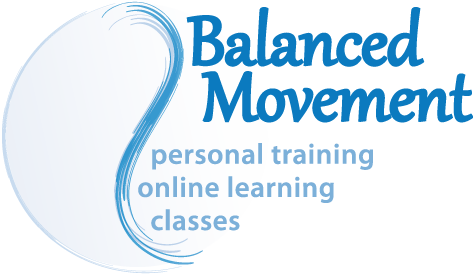Core Strengthening for Runners
Balanced Movement Studio
Why are core exercises important for runners?
The human body is a dynamic system with many movement possibilities. Movement options allow the body to adapt and compensate for different functional tasks. When we run, the body acts as a system geared for absorbing and then generating forces relative to the ground. The goal of the system is to quickly and efficiently dampen the forces produced by the weight of our body hitting the ground and then quickly generate a reaction that produces force that will propel the body forward.
The forces that act to move the body can be categorized into 3 movement planes; Sagittal, Frontal, and Transverse. The sagittal plane is forward in relation to the body. The frontal plane is equivalent to side-to-side movement, and the transverse plane is a rotational movement of our body parts around a vertical axis. The goal, as stated above, is to move the body forward in a pure sagittal plane.
1- Sagittal Plane: Forward movement or bending forward and backward.
2- Frontal Plane: Weight shifting from one leg to the other in a side-to-side manner.
3- Transverse Plane: Pelvic, hip, and trunk rotation.
Major Running Muscle Groups by movement planes:
1- Sagittal Plane: Posterior gluteal muscle fibers, Hamstrings, Gastroc/soleus, Back extensors, and Rectus abdominus.
2- Frontal Plane: Quadratus Lumborum (back of the waist), Gluteus medius, Groin muscles, Transverse Abdominus, and Ankle stabilizers.
3- Transverse Plane: Abdominal Obliques, Gluteus medius, Piriformis, and Transverse Abdominus.
The muscles in this list can be divided into prime movers and stabilizers. Prime movers are used to power the body forward and stabilizers are used to keep all of the body segments moving as one unit in the desired direction. Controlling the movement of the body in all three planes of motion is the main role of the ‘core’ muscles, and is supplemented by the secondary actions of some of the prime movers. Some of these muscles and muscle groups overlap in both movement planes and categories because they serve multiple purposes during different phases of the running stride. For a saggital plane activity such as running, the control of motions in other planes by the core muscles becomes critical.
As one can see from the above list, the term ‘core’ can be functionally defined as synonymous with ‘stabilizing’. To appropriately create a ‘core strengthening’ program for running, you must evaluate muscle groups by function relative to the desired activity not just by the muscles location within the body. A truly functional core strengthening program will be designed with these principles in mind.
If the muscles included in these defined categories are not functioning in the proper manner, inefficiencies will be seen in the running form. These inefficiencies can manifest as sub-optimal performance, pain or injury. When the stabilizing muscles are not functioning to keep optimal alignment of the body segments, then other, less appropriate muscles will be use to compensate for this instability and fulfill the role of stabilization. Many of the dysfunctions seen in running from are from one muscle compensating for another muscle group’s underperformance. Some of the more common inefficiencies seen in runners that are caused by these compensations are:
1- Unwanted tilting of the pelvis.
2- Excessive side-to-side movement at the hips.
3- Excessive or insufficient rotation of the hips and pelvis.
4- Excessive use of the calf and ankle muscles.
So, what does this mean to the average runner? Some of the common symptoms and complaints that accompany these movements are the very things that interfere with our joy of running.
1- Excessive tilting of the pelvis leads to back pain and chronic hamstring tightness.
2- Excessive side-to-side movement increases the amount of weight each lower extremity must deal with and can cause anterior knee, hip, and low back pain as well as illio-tibial (IT) band problems.
3- Excessive or insufficient hip rotation leads to increased impact on the spine, buttock pain, sciatica, and increased stresses at the foot and ankle.
4- Excessive use of calf and ankle muscles can lead to symptoms of Achilles tendonitis, plantar fascitis and shin splints.
As you can see from this abbreviated list, the painful area is often not the area at fault. Pain will be felt where the body breaks down due to too much stress. For proper mechanical efficiency, problem prevention, injury management and recovery, it is important to recognize and address the causative factors and not just focus solely on relieving pain at its location.
A very simple way for runners to avoid such pitfalls in their weekly running activities is to include some exercises that prepare the body to work more efficiently. This type of preparation is important, regardless of the level of activity each runner is doing. It is important to include work on these core muscle groups during the running season. The goal of all runners is simply to be able to run, and the more efficient the movement, the more enjoyable the experience.
Categories: Articles, Running Resources




